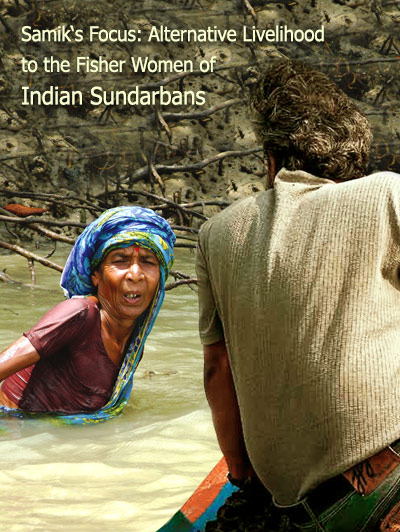
The RBRF family of almost 3000 crusaders is proud to have our Founder onboard, Mr. Samik Gupta whose selfless efforts towards Wildlife Conservation and Rural Women Development are unparallel and he also happens to be a prominent member of the International Union for Conservation of Nature- Commission on Education and Communication (IUCN-CEC), since 2007. He is also the founder of Nature India Group (NIG) and Editor, Nature Indian. Mr. Gupta is globally known as “Wildlifer”; working in the realm of wildlife conservation, since 1989 and desperate stakeholders of Rural Women Empowerment, since 2014 .
Mr. Gupta is the elder son of eminent scientist and academician late Dr. Sukumar Gupta and Late Dr. Ira Gupta, born on 1st May 1968. He is globally known as Wildlife Conservationist and livestock consultant. His interest on wildlife and livestock has been deep-rooted since his childhood. Hence, he has started his career as a Photojournalist in late 80’s and with the specialization In Wildlife Journalism, Perhaps first of its kind in northeast India. Later his thirst virtually turn him to an independent Wildlife and Livestock Researcher, Writer, Editor, Documentary Film Maker and desperate stakeholder of Biodiversity conservation (SBC) along with Livelihood-Livestock Development (LLD) around the forest–side villages. He intensively worked at numerous Forests, Tribal Areas and few 1000 villages of West Bengal, Bihar, Orissa and Andaman Islands.
An outcome of vast work, he has published more than 600 Articles, Reporters and Theme papers, coupled with producing 26 Documentary Films, all on Forest, Wildlife, Livestock and Tribal issues respectively. His long achievement list include the most popular works, like GOBADI (on livestock farming), WILD BENGAL (on Forest Conservation), MONSOON JALDAPARA (on Wildlife Conservation), JOURNEY TO SANDAK-PHU (Eco-Tourism), THE SLEEEPLESS SENTINELS (on Snake Conservation), BAHADONG (on primitive Tribal Culture) and so on.

Media works apart, Gupta has also concluded a number of applied research works such as (1) Fog Factor and Tiger Straying Problem around Indian Sundarban (2) Habitat Shifting of Frontline Mangrove around Sundarban (3) Forced Habitation: change in prey-predator Relationship and hunting methods in Sundarban (4) Struggle and survival threats to the Fisherwomen of Sundarban (5) Palatable Food and Elephant migration problem in southern West Bengal (6) Inbreeding problem & genetic saturation of Rhinoceros Unicornis in Northern Grasslands (7) In-situ and Ex-situ conservation of Clouded Leopard and Red Panda at High altitude of West bengal (8) Lac cultivation and alternative livelihood of the Manbhum Forest Villagers etc. are absolute rewards to his credential.
Beside a number of animal farms and zoos of India, he has extended his valuable advices to the concerned state and central government departments, time to time. Gupta was also nominated as the theme writer for the project NBSAB (National Biodiversity: strategy and action Plan), WB chapter. He has initiated several state level projects, i.e.; NASA (Notional Area of Scientific Aforestation), SPANE (Students Awareness Program on Nature and Environment), SEED (Support Enhancement for Eco-Development), ETIS (Eco-Tourism Initiative for the Student), SFWS (Social Support Scheme for the Fisherwomen of Sundarbans), SIFALI (Sundarban Inland Fisherwomen Alternative Livelihood Initiative), MARK (Malda Adibasi Ramoni Karmojog Prokolpo), project BESTWAY (Business Entrepreneurship Support towards Womenability and Yield) and project LEAD (Livestock Entrepreneurship Acceleration & Development Program); are the prominent rural development steps undertaken by Mr. Gupta.
Among several recognitions, Gupta has received acclamation from the office of Mr. K.R. Narayanan, the former honorable President of India in the year 2000, for his vast research works on West Bengal forest and wildlife. Mr. Somnath Chatterjee, the former honorable speaker of parliament mentioned him as the “Crusader of Conservation” in 2010. Gupta has finally been recognized by the IUCN-CEC in the year 2007.